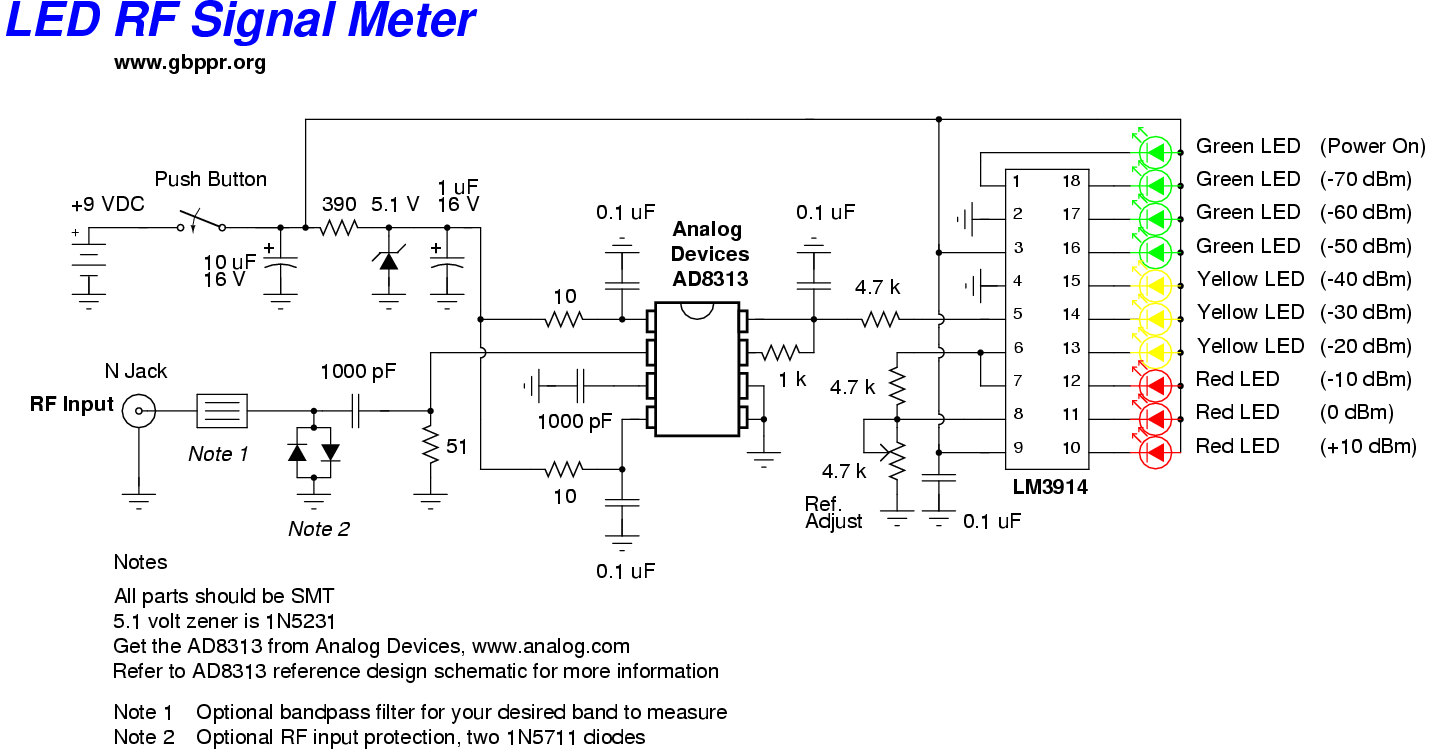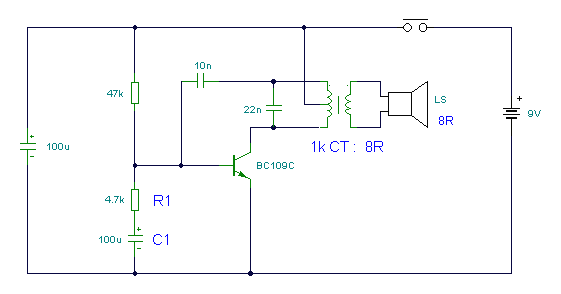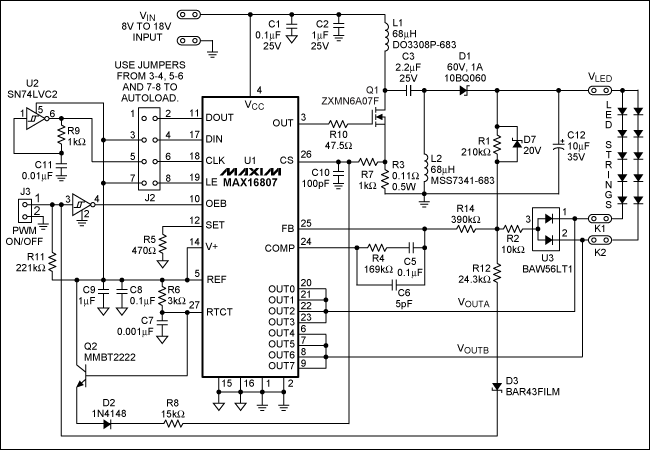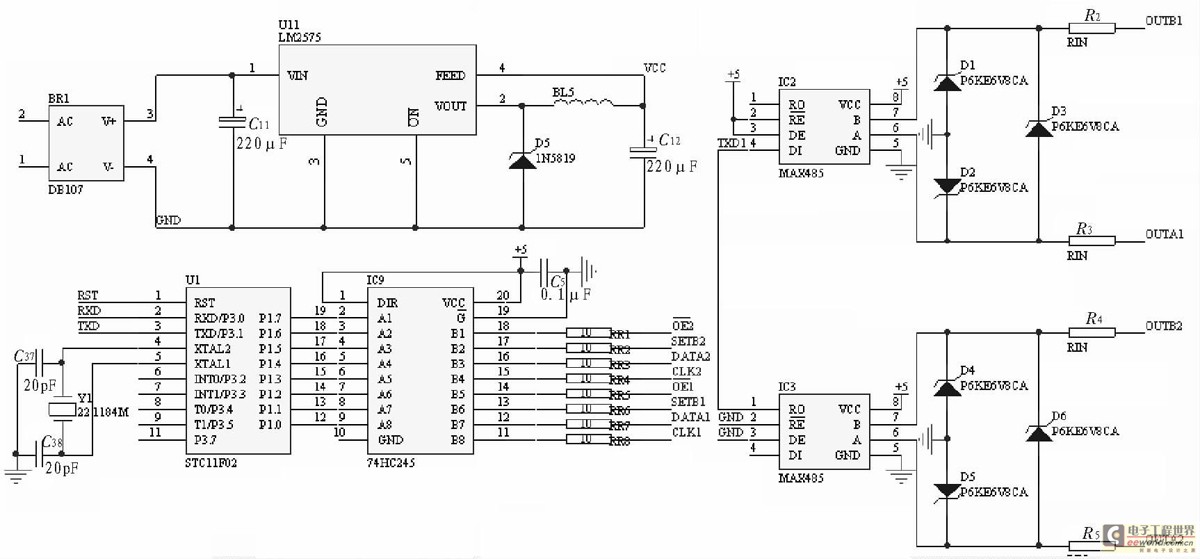
Electronic LED compass
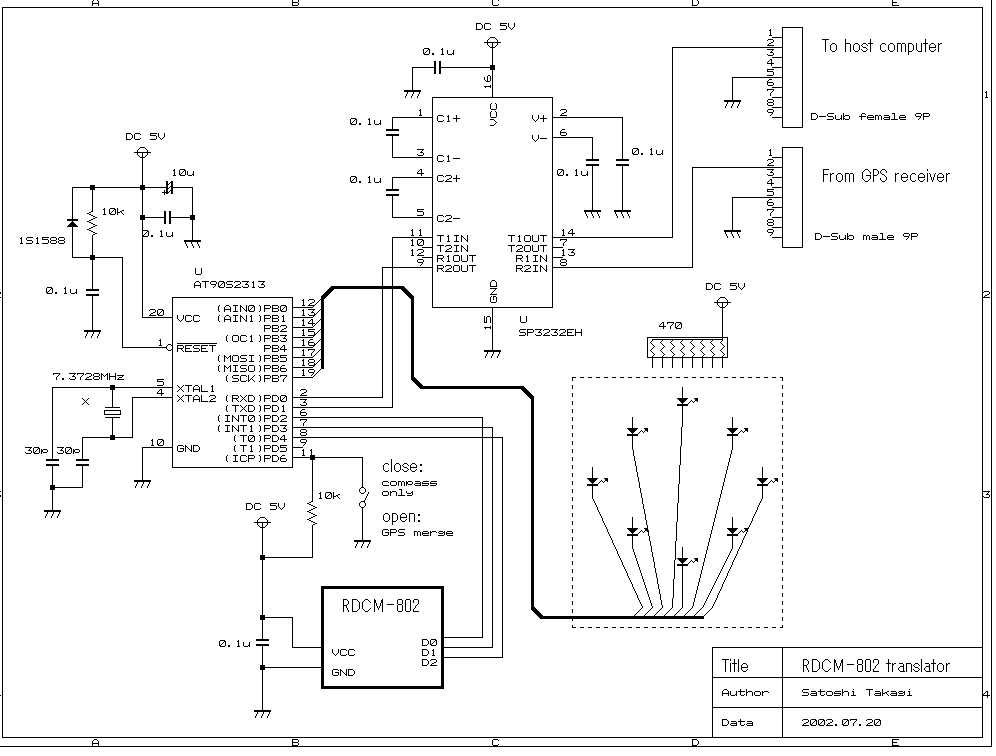
This is a compass circuit based at AT90S2313. The output drives 8 LEDs to indicate the different horizon directions.
The compass circuit utilizes the AT90S2313 microcontroller, which is an 8-bit AVR microcontroller with a rich set of features suitable for this application. The circuit is designed to interpret directional data and visually represent it through a series of eight Light Emitting Diodes (LEDs). Each LED corresponds to a specific cardinal or intercardinal direction, providing a clear visual indication of orientation.
The microcontroller is programmed to read input from a suitable sensor, such as a magnetometer or a digital compass module. This sensor outputs directional information, which the AT90S2313 processes to determine the current heading. The microcontroller then activates the appropriate LEDs based on the calculated direction.
The circuit may include a voltage regulator to ensure stable operation of the microcontroller and LEDs, as well as resistors to limit the current flowing through each LED, preventing damage. The design should also consider the use of decoupling capacitors near the power supply pins of the microcontroller to filter out noise and ensure reliable operation.
In addition to the basic functionality, the circuit can be enhanced with features such as adjustable sensitivity, calibration routines for the sensor, and a user interface for configuration. This can be implemented using additional buttons or a small display to provide feedback to the user.
Overall, this compass circuit is a practical application of microcontroller technology, providing a straightforward yet effective way to visualize directional information using LEDs.This is a compass circuit based at AT90S2313. The output drives 8 LEDs to indicate the different horizon directions. 🔗 External reference
The compass circuit utilizes the AT90S2313 microcontroller, which is an 8-bit AVR microcontroller with a rich set of features suitable for this application. The circuit is designed to interpret directional data and visually represent it through a series of eight Light Emitting Diodes (LEDs). Each LED corresponds to a specific cardinal or intercardinal direction, providing a clear visual indication of orientation.
The microcontroller is programmed to read input from a suitable sensor, such as a magnetometer or a digital compass module. This sensor outputs directional information, which the AT90S2313 processes to determine the current heading. The microcontroller then activates the appropriate LEDs based on the calculated direction.
The circuit may include a voltage regulator to ensure stable operation of the microcontroller and LEDs, as well as resistors to limit the current flowing through each LED, preventing damage. The design should also consider the use of decoupling capacitors near the power supply pins of the microcontroller to filter out noise and ensure reliable operation.
In addition to the basic functionality, the circuit can be enhanced with features such as adjustable sensitivity, calibration routines for the sensor, and a user interface for configuration. This can be implemented using additional buttons or a small display to provide feedback to the user.
Overall, this compass circuit is a practical application of microcontroller technology, providing a straightforward yet effective way to visualize directional information using LEDs.This is a compass circuit based at AT90S2313. The output drives 8 LEDs to indicate the different horizon directions. 🔗 External reference

